Vegan Drunken Noodles (Pad Kee Mao)
A delicious vegan drunken noodles recipe in a sweet and spicy sauce that all comes together in just 20 minutes!
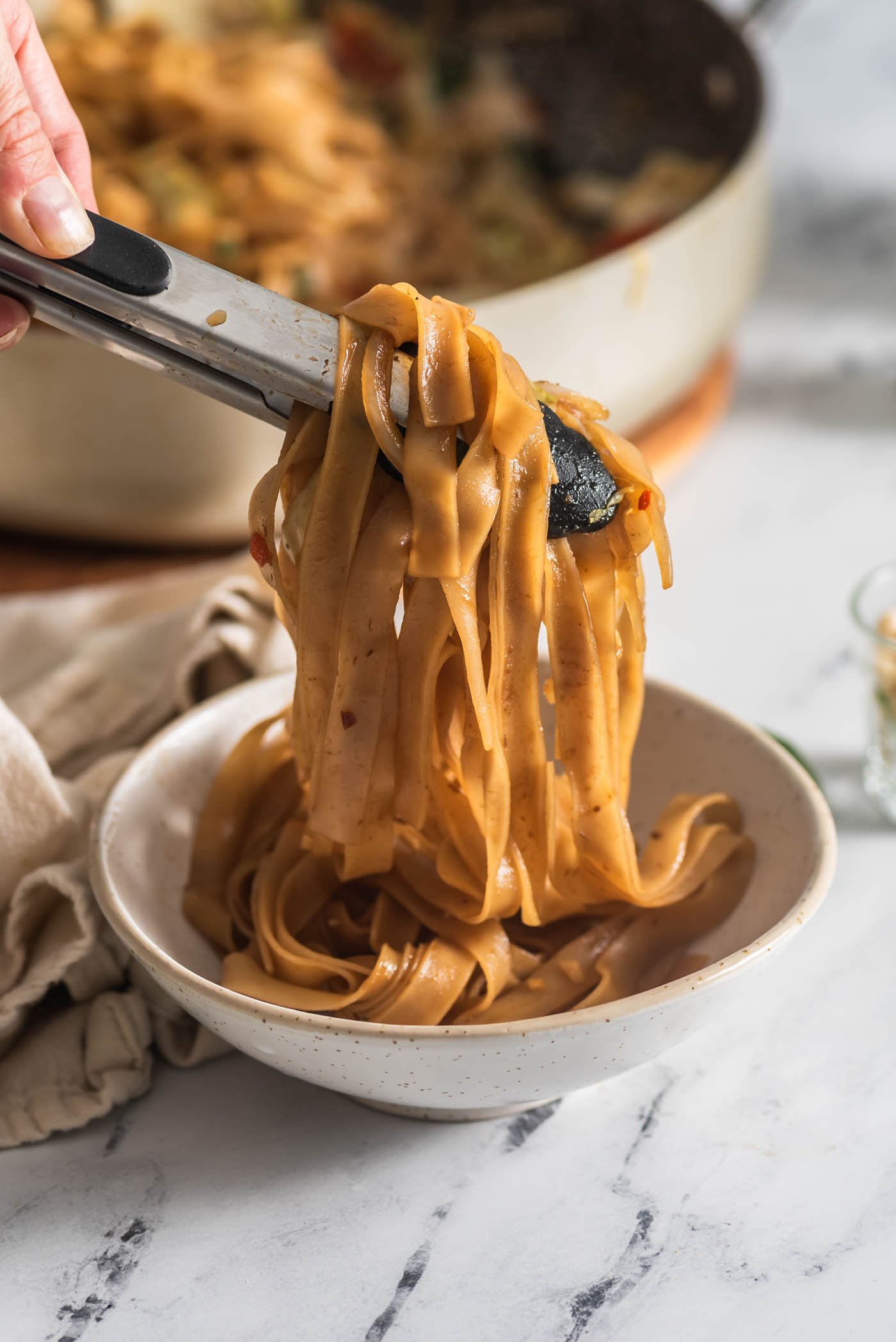
About the Recipe
If you love Thai food, you’re probably familiar with this popular dish.
Drunken noodles, otherwise known as pad kee mao, are somewhat similar to Pad Thai and features stir-fried veggies and rice noodles in a slightly sweet and spicy sauce. And don’t worry, drunken noodles do not contain alcohol!
This recipe is by no means authentic. It’s inspired by Thai cuisine but is definitely not a substitue for traditionally prepared Thai food.
That being said, it’s a fun homemade version you can make with ingredients you may already have on hand or can find locally.
I hope you enjoy this vegan pad kee mao, or drunken noodles. They’re super tasty and easy to make and I’m sure you’ll love to make them again and again!
Noodle lover? You’ll want to try these Garlic Chili Oil Noodles, Red Curry Noodles and Udon Noodle Stir Fry too! For more Thai recipes, this Thai Basil Eggplant and Vegan Tofu Pad Thai are both popular and delicious.
What are drunken noodles?
Drunken noodles, or sometimes called drunkard noodles, is the English translation of pad kee mao, a popular Thai stir-fried noodle dish widely available in Thailand and outside of Thailand as well.
The history of the dish is a little unclear. Once explanation is that the noodles are perfect after a night of drinking, prepared from staple ingredients one might have on hand, another is that the spicy ingredients can be tasted even if very drunk.
It may also be that they’re meant to be paired with a cold beer, are meant to cure a hangover, or are so spicy they make you feel drunk.
Drunken noodles usually features chicken, holy basil, baby corn, and wide rice noodles in a spicy, savoury sauce. This vegan version does not contain chicken, of course, though you can add your choice of protein to the recipe.
Ingredients
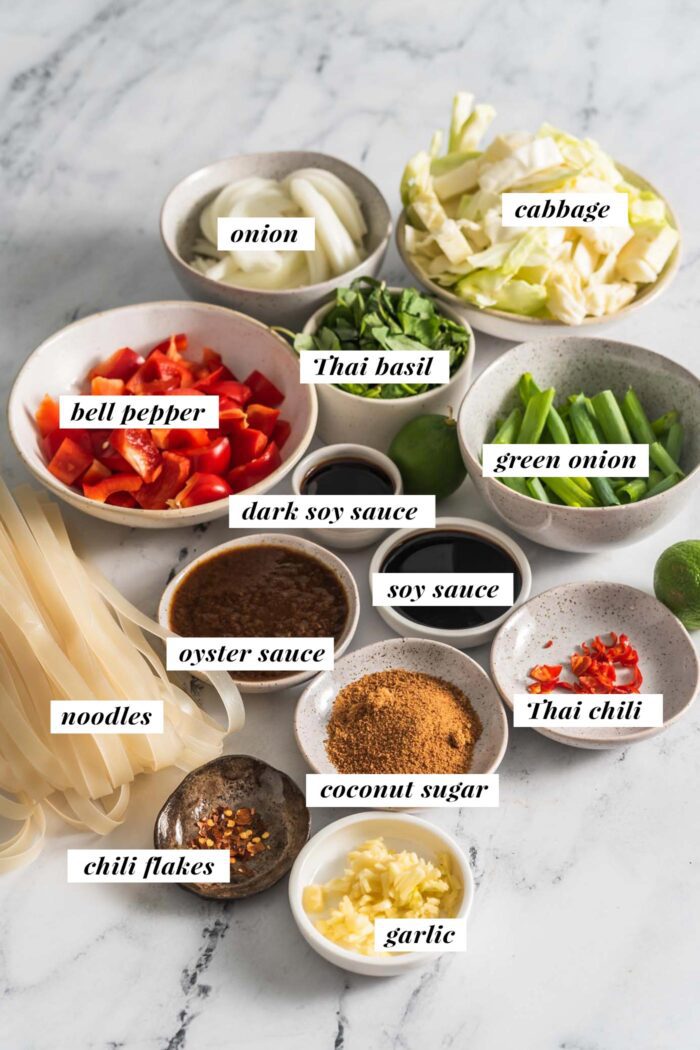
- Soy Sauce or Tamari: You can use regular or low-sodium soy sauce, tamari or coconut aminos.
- Dark Soy Sauce: Dark soy sauce is darker, thicker and slightly sweeter than regular/light soy sauce. I would recommend using the combination of regular and dark soy sauce but if you don’t have dark soy sauce you can use all regular soy sauce.
- Vegetarian Oyster Sauce: There are a number of brands that make vegetarian oyster. I used Naked and Saucy but you can also look for Lee Kum Kee or Wan Ja Shan brands. If you’re not vegan or vegetarian, you can use regular oyster sauce. You can find this online, in well-stocked grocery stores in specialty Asian grocery stores.
- Coconut Sugar: This can be substituted with brown sugar or maple syrup if needed.
- Onion: White or yellow onion is suitable.
- Thai Chilies: These are the very small red chilis you may be familiar with when ordering Thai food. They’re not overly spicy if you remove the seeds, so feel free to add more if you want some good heat in the final dish, or you can sprinkle some extra over the noodles at the end. You can use jalapeño pepper as a substitute.
- Thai Basil: Thai basil or holy basil is best. Drunken noodles are traditionally made with holy basil but it can be hard to find. If you can get your hands on some, go for it, if not, use Thai basil. You could also use Italian basil but the flavour will not be the same, so I’d definitely recommend using at least Thai basil, if not holy basil.
- Wide Rice Noodles: May be labelled bahn pho, vermicelli, rice stick noodles, or wide rice noodles and can be found dried or fresh. I used Rose Brand dried vermicelli banh pho. If you can’t find wide rice noodles, regular rice noodles, or rice stick/vermicelli banh pho works. If you can find fresh rice noodles, they are definitely superior to dried ones, though both options work in the recipe.
Please see the recipe at the end of the post for the complete ingredient list with measurements.
Variations & Additions
- Additional Veggies: You can add broccoli florets, ginger, carrot, bok choy, spinach, snow peas, snap peas, mushroom or baby corn to the recipe.
- Tofu: To serve with tofu, you can either bake this Crispy Baked Tofu separately and serve on top, add cubed extra firm tofu directly to the recipe when you add the sauce, or pan-fry the tofu first or separately. If pan-frying first, use the tofu portion of this Curried Tofu Recipe, remove from the pan and then add back in when you add the noodles and sauce.
- Tempeh: You could make the tempeh portion of this Tempeh Stir Fry, remove from the pan and then add back in with the noodles and sauce.
- Nuts: Serve with crushed peanuts or cashews. You can also add the cashews in earlier if you prefer them softer like in this Cashew Tofu Stir Fry.
Step-by-Step Instructions
Step 1: Prepare the rice noodles according to the package instructions, or just place them in a large bowl and cover with hot water and let soak for 10-15 minutes.
If you can find fresh wide rice noodles, use those and prepare them according to the package instructions. You maybe be able to find them in an Asian grocery store in the refrigerated section. If not, dried wide rice noodles totally work too and that’s what I used.
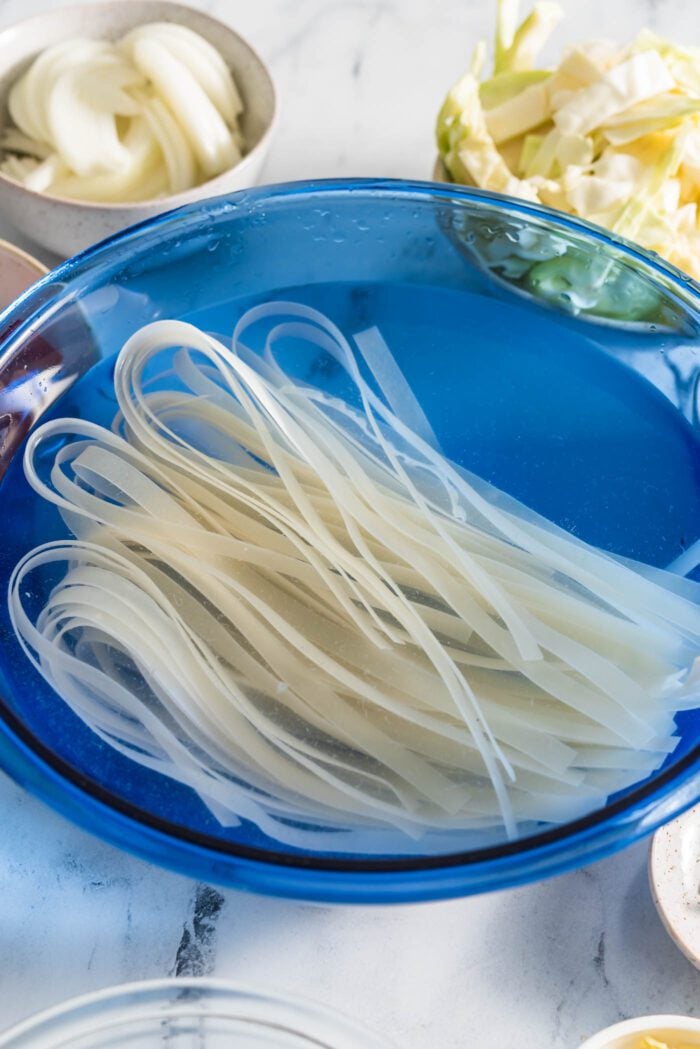
Once they have an al dente consistency, drain, rinse and prepare to add to the stir fry. Be careful not to over soak them as they will finish cooking the last few minutes in the pan.
Quick Tip: For efficiency here, I recommend getting the noodles soaking first, then chopping up your veggies and making the sauce. Start cooking stir fry after the noodles have been soaking for 8-10 minutes so when you’re ready to add the noodles to pan, they’ll be ready to go.
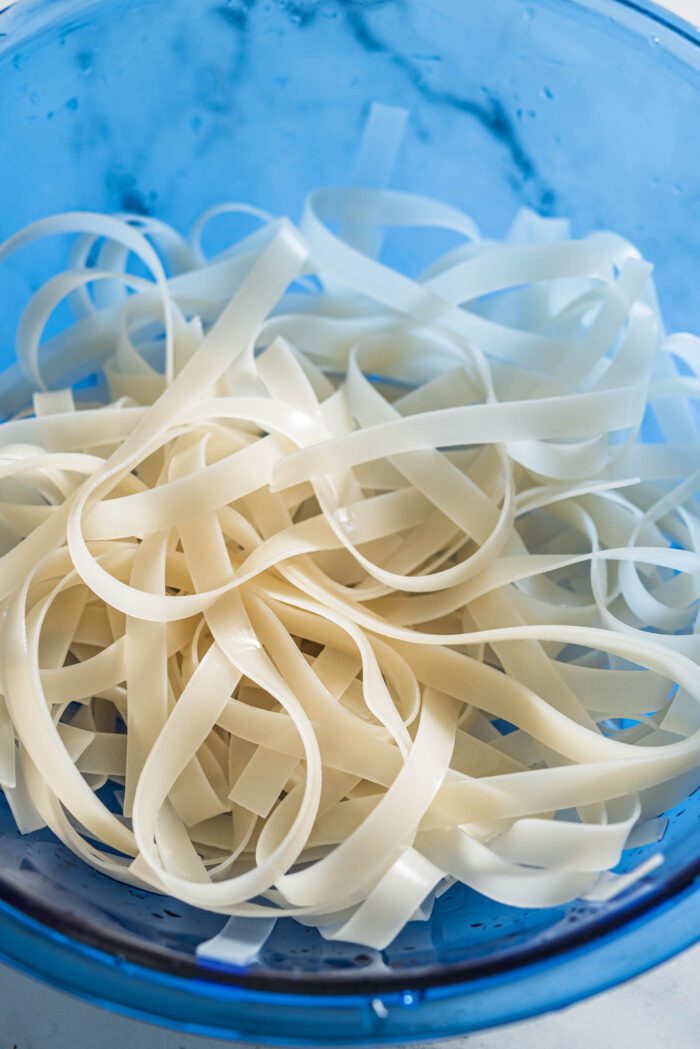
Step 2: Prepare the sauce by adding all of the ingredients to a bowl and whisk to combine. Give it another stir just before adding to the pan in step 4.
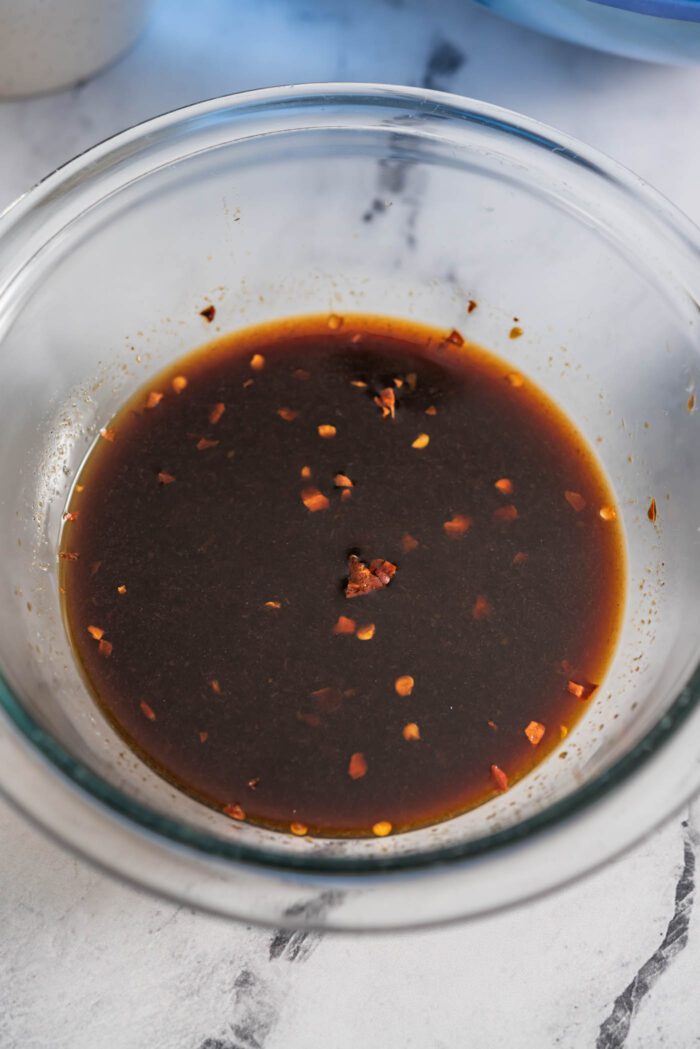
Step 3: Heat 1.5 tbsp of neutral oil, such as avocado or olive oil in a large pan and then add the cabbage, onion, bell pepper and green onion.
Stir fry them for 4-6 minutes, stirring often, then add the garlic and cook for 1 more minute, stirring constantly.
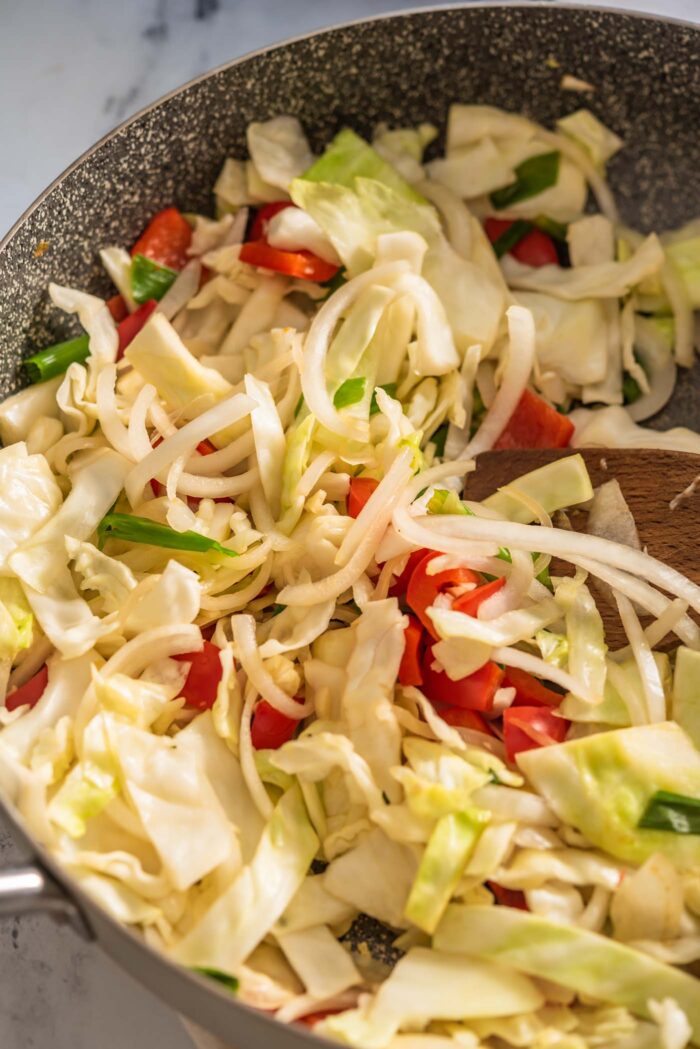
Step 4: Add the noodles, sauce, basil and chilis, mix everything up (tongs are helpful!) and cook for another 1-2 minutes until the noodles have absorbed most of the sauce.
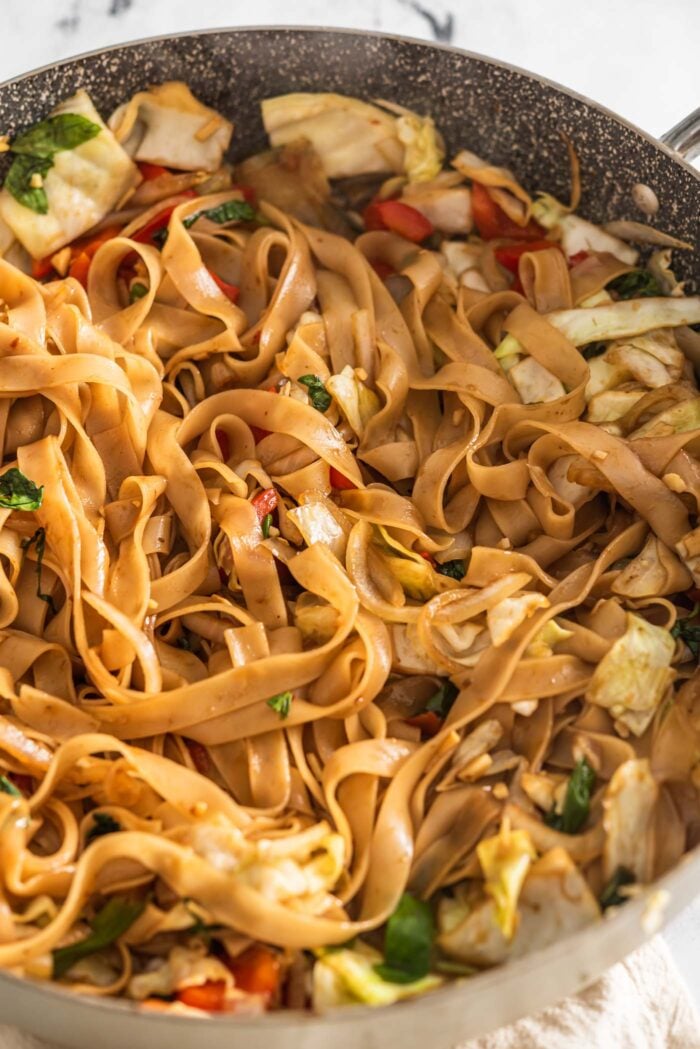
Divide your delicious noodles between bowls, top with more basil and chilis, if you like and serve a squeeze of lime juice.
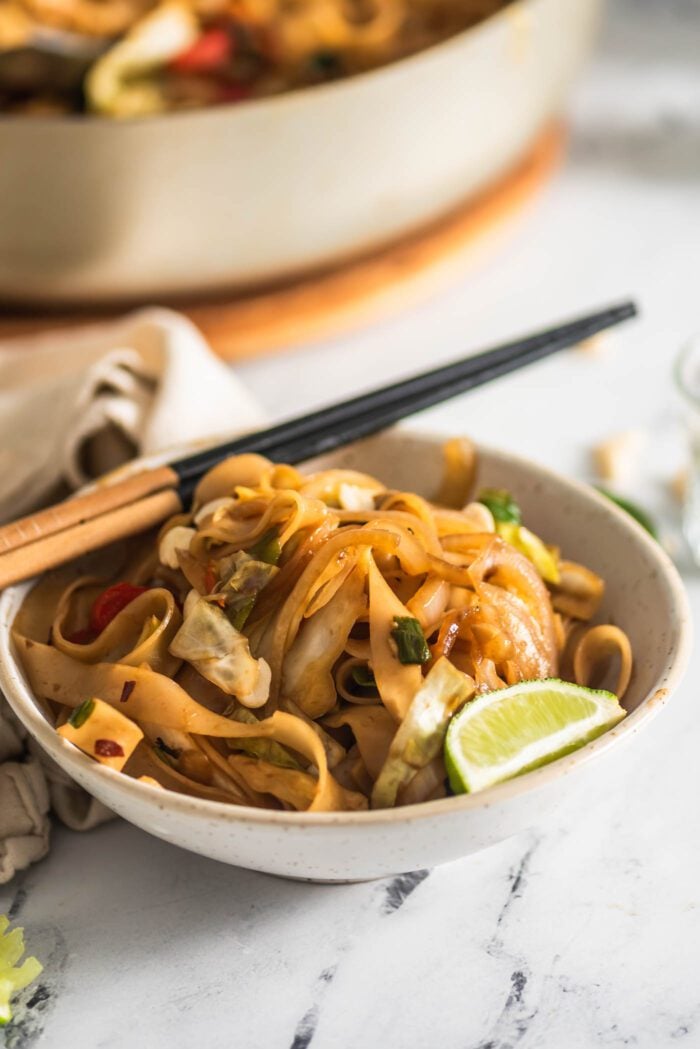
Recipe FAQs
Fresh wide rice noodles are best for drunken noodles. You can find them in the refridgerated section of an Asian grocery store. If you ccan’t find fresh rice noodles, you can use dried wide rice noodles.
I used Rose Brand banh pho and Thai Kitchen makes them as well. If you can’t find wide rice noodles, you can use fresh or dried regular rice noodles.
You can use cabbage, broccoli, carrot, bok choy, mushroom, baby corn, green onion or bell pepper.
This recipe calls for cabbage, green onion, onion and bell pepper but it’s not crucial if you’re missing one or don’t have the exact amount. It’s more about the sauce and noodles!
You may be able to make gluten-free drunken noodles but you’ll need to look for a gluten-free oyster sauce, I believe Kikkoman and Lee Kum Kee Panda brands make one, as well as substitute tamari for the soy sauce and dark soy sauce.
The rest of the ingredients are naturally gluten-free.
Leftovers will keep in an airtight container in the fridge for up to 4 days.
I have not tried freezing drunken noodles though it is possible to freeze for a month or two in a good freezer-safe container. They’re much better fresh though.
Reheat drunken noodles in the microwave or in a pan until heated through.
You can use regular, or sweet Italian basil, instead of Thai holy basil but I’d recommend using holy basil if you can find. Thai basil is typically found alongside sweet basil in the grocery store.
To make this recipe gluten-free, use gluten-free tamari or coconut aminos in place of the soy sauce and dark soy sauce.
Cooking Tips
- Measure the sauce ingredients. While it’s ok to eyeball the veggies for this recipe, I would definitely recommend accurately measuring the sauce ingredients to ensure the right balance of sweet, spicy and umami.
- Be prepared. The recipe goes quickly once you start, so make sure you prepare all the ingredients before you start cooking.
- Enjoy fresh. Rice noodles absorb a lot of moisture so these are best served fresh when they’re nice and saucy!
- Use a large enough pan. Use a large pan or wok to cook for stir frying so the ingredients have room to fry and brown rather than steam in a crowded pan.
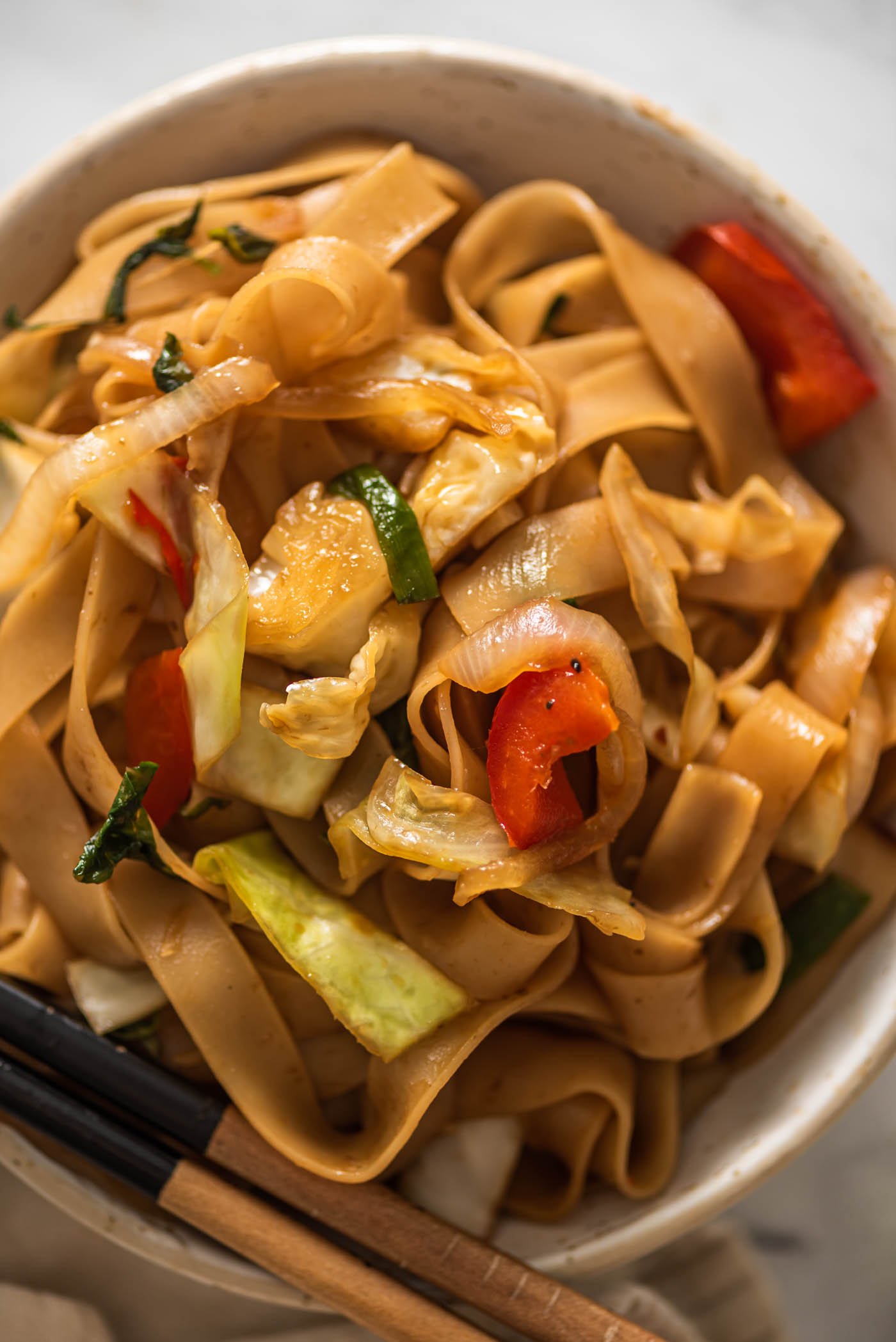
More Noodle Recipes
Did you try this recipe? I’d love to hear about it! Scroll down to the comment section to leave a star rating and review.
⭐️⭐️⭐️⭐️⭐️
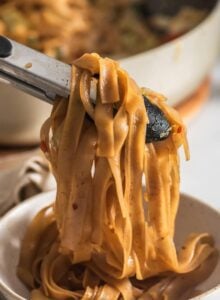
Vegan Drunken Noodles
- Prep Time: 15 min
- Cook Time: 10 min
- Total Time: 25 minutes
- Yield: 4
- Category: Main Dish
- Cuisine: Asian
- Diet: Vegan
Description
These spicy vegan drunken noodles, or pad kee mao, are easy to make in 20 minutes for a homemade version of the Thai favorite.
Ingredients
For the Sauce
- 2 tbsp soy sauce or tamari
- 2 tbsp dark soy sauce*
- 4 tbsp vegetarian oyster sauce**
- 2 tbsp coconut sugar
- 2 tbsp water
- Pinch chili flakes
For the Stir Fry
- 8 oz wide rice noodles
- 1 ½ tbsp oil (a neutral oil like avocado is best)
- 1 small white onion, peeled and thinly sliced (150 g, about 1 ¾ cups sliced)
- 4–5 green onions, cut into 1-inch pieces
- 4 cloves garlic, minced (18 g)
- 1 red bell pepper, chopped (185 g)
- 3 cups chopped green cabbage (300 g)
- 1–2 Thai red chili, seeds removed and very thinly sliced
- 1 cup fresh Thai basil or holy basil, plus more for serving***
- lime for serving, optional
Instructions
- Soak the Noodles: Follow the directions on the rice noodle package or transfer the noodles to a heat-proof bowl and cover with hot water. Soak noodles for 10-15 minutes, until just tender. Drain noodles, then set aside for cooking. Note: you want the noodles to be softened, but still a little ‘al dente’ as they will finish cooking in the pan. Also, make sure your noodles are softened before you start stir-frying, as it goes quite quickly.
- Make the Sauce: Combine all sauce ingredients in a small bowl. Whisk until sugar dissolves, then set aside.
- Stir Fry the Veggies: Heat the oil in a wok large skillet over medium-high heat. When the pan is hot add the onion, green onion, pepper and cabbage. Cook for 4-5 minutes, stirring often until the veggies are tender-crisp.
- Add the Garlic: Add the garlic and cook for 1 minute, stirring constantly, until fragrant.
- Add Noodles & Sauce: Add the noodles, sauce, Thai basil and chilis, mix well to coak the noodles, cooking for 1-2 minutes, tossing noodles often until warmed through and the noodles have soaked up all the excess sauce.
- Serve: Divide noodles between bowls and sprinkle with more Thai basil and thinly slices chilis, if desired. Serve with lime wedges on the side.
Notes
*You can 4 tbsp soy sauce or tamari but it’s more traditional with the dark soy sauce and it gives the noodles that nice dark colour as well as adds a touch of sweetness.
**Lee Kum Kee and Wa Ja Shan both have a vegetarian oyster sauce or you can use Naked and Saucy (that’s what I used). This can be found online, in any Asian food store or in natural food stores and well-stocked grocery stores.
***If you can find holy basil, that’s the best for this recipe. Next best is Thai basil. If you can’t find either of those, you can use Italian basil but the flavour will not be the same.
If you want to add tofu to this recipe, you can make fried tofu according to this sweet and sour tofu recipe or baked tofu according to this peanut tofu bowl recipe.
Fresh wide rice noodles are best in this recipe. They’re found in the refrigerated section at Asian grocery stores. If you can’t find those dried wide rice noodles work, these are easier to find in stores or online. If you can’t find wide rice noodles, regular rice noodles are ok.
Nutrition
- Serving Size: 1/4 of recipe
- Calories: 342
- Sugar: 11 g
- Fat: 6 g
- Carbohydrates: 65 g
- Fiber: 4 g
- Protein: 7 g

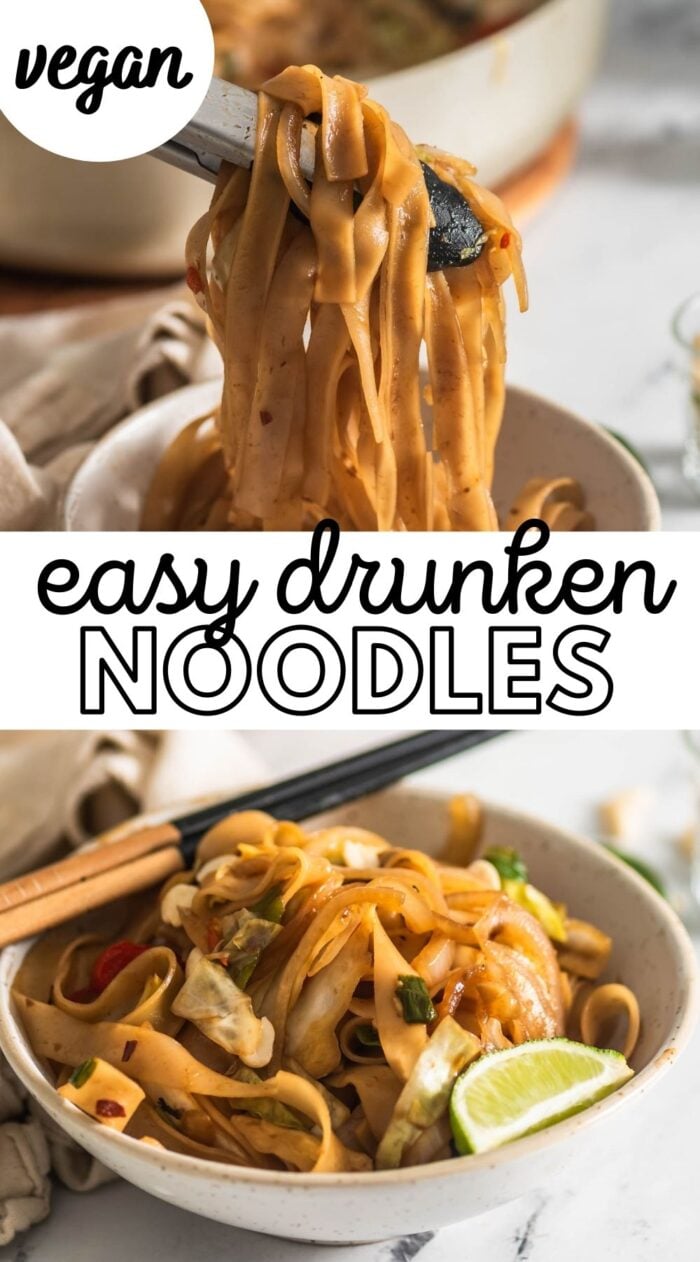
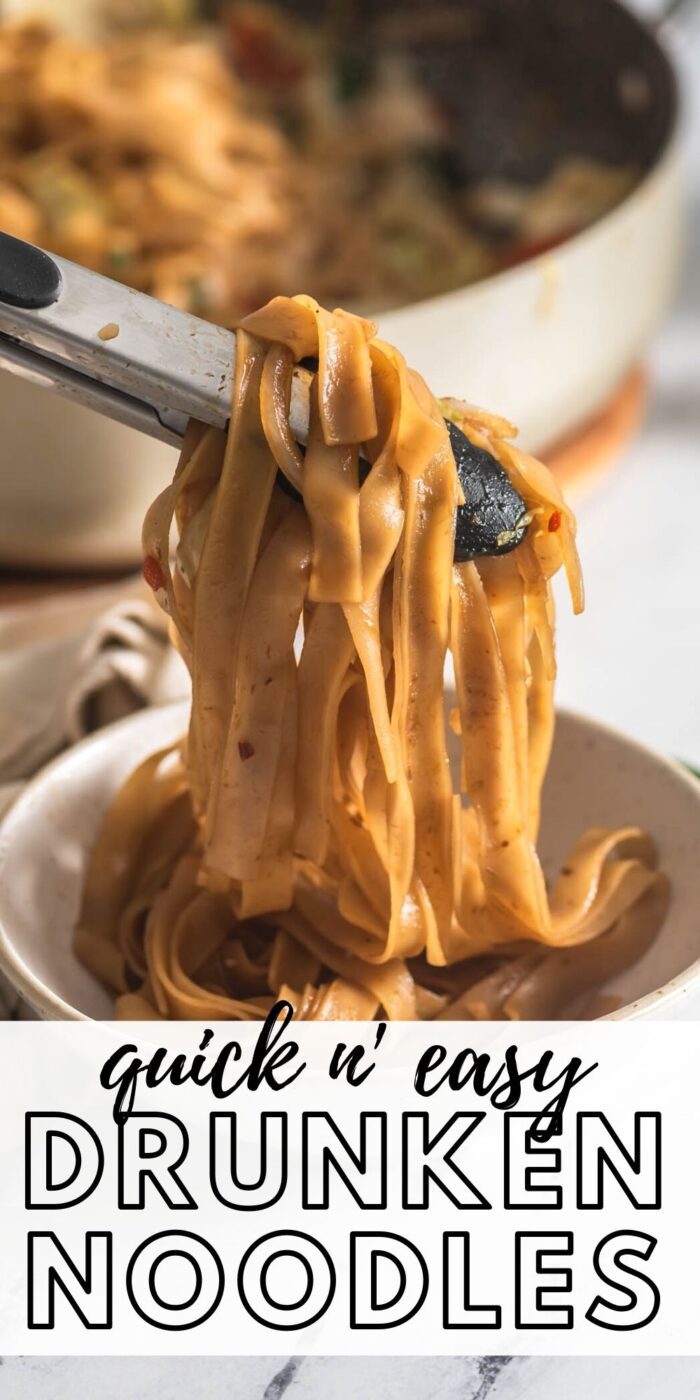
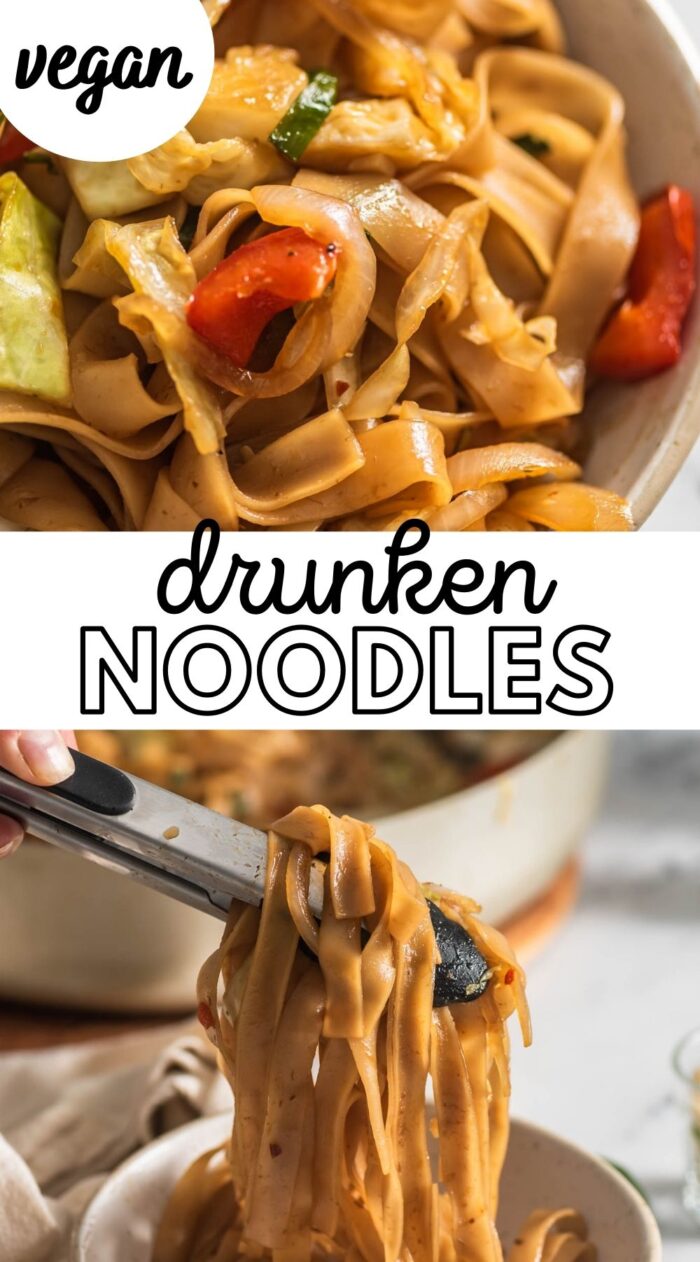
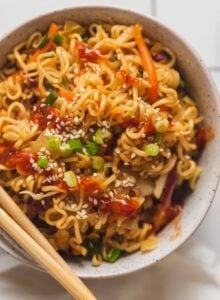
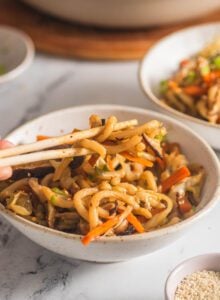
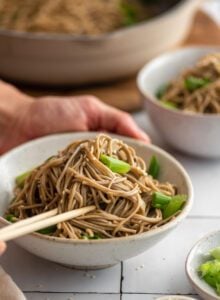
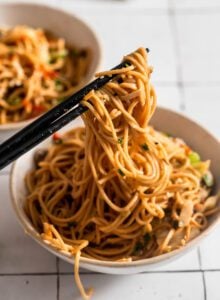

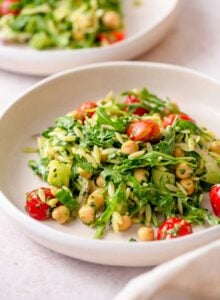
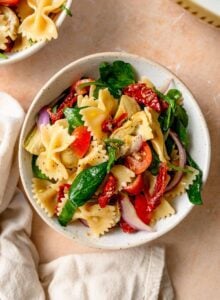
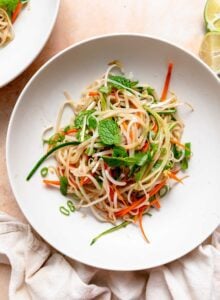
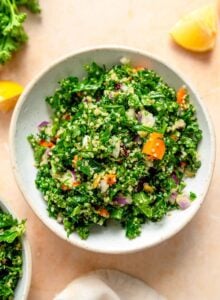
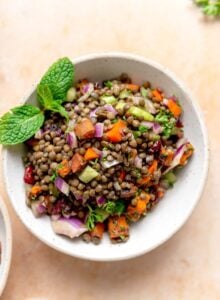
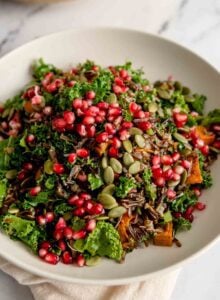
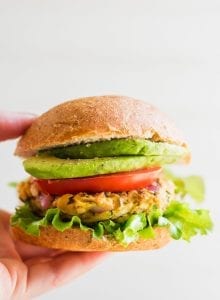

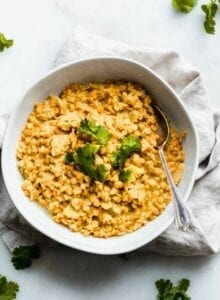
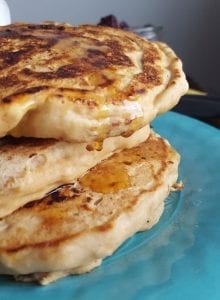


Easy and delicious! I added chopped peanuts to the top.
So glad you enjoyed them!
Loved it! Super easy and delicious. Will definitely be a new go-to recipe.
I swapped the green cabbage for bok choy and a little purple cabbage, and it was delicious. Thanks!
Glad you enjoyed it! Thanks for the review 🙂
Ok I’m kind of obsessed with these. I couldn’t find wide rice noodles so just used regular rice noodles…well, they were labelled pad thai noodles but seemed to work! I followed the rest of the recipe pretty much exactly. I will definitely make them again!